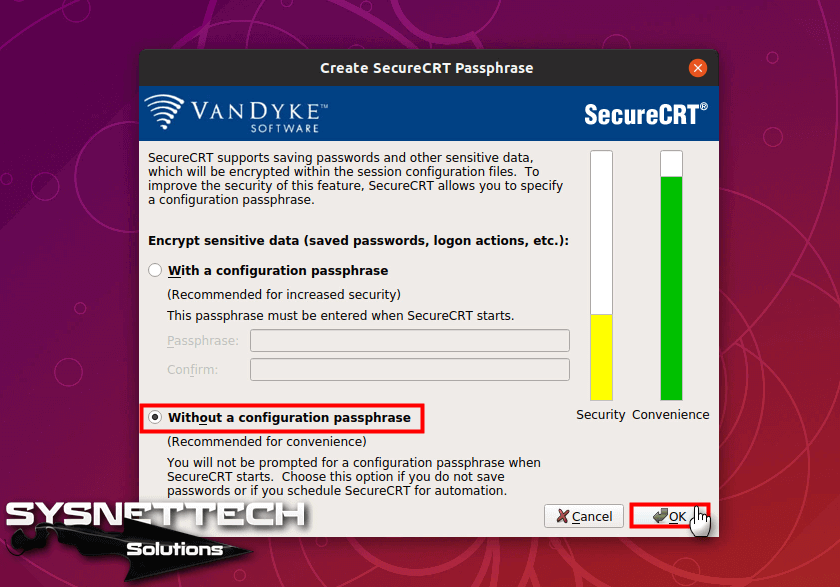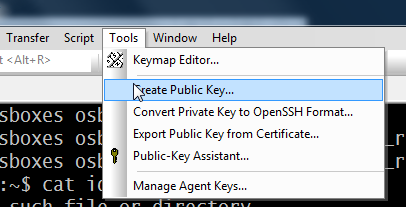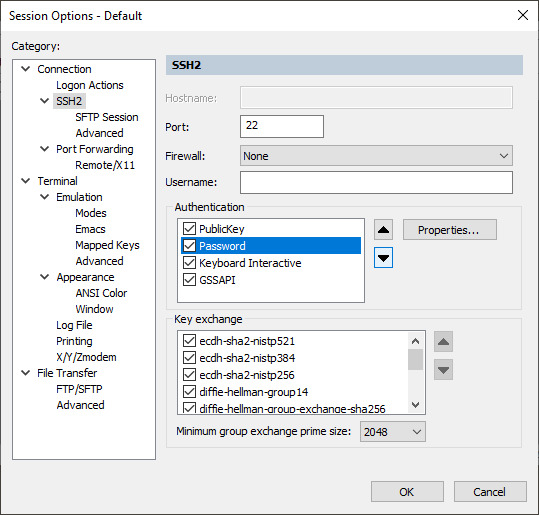
- #SECURECRT PUBLIC KEY HOW TO#
- #SECURECRT PUBLIC KEY FULL#
- #SECURECRT PUBLIC KEY CRACK#
- #SECURECRT PUBLIC KEY WINDOWS#
Go ahead and enter either the DNS name or direct IP of the server you want to get into.

You can see multiple radio buttons that serve different connection types (we'll be using SSH here). PUTTY won't have any "Saved Sessions" to start with (those are some of my personal ones).
#SECURECRT PUBLIC KEY WINDOWS#
Windows users need an SSH agent to do this (PUTTY, SecureCRT, 's up to you.

Now that you have your authentication agent setup, you can attempt to SSH into your target.

On Linux and Mac, the preinstalled OpenSSH package includes an authentication agent, so no additional configuration is necessary. Now hit "Add Key" and browse to the location where you stored the private key that you generated at the beginning and then add it. The agent has no keys loaded by default (this can be changed with a launch flag on the. Now you can launch the agent and then load your key (the program defaults to your icon tray once launched): Now that you've created the public/private key pair, you'll want to use an authentication agent to load the key for your SSH sessions. Using an authentication agent (recommended) The id_rsa.pub file is your public key and can be given to the SingleComm ops team to be installed on any server that you require access to. The id_rsa file is your private key and should be kept in a safe place. After this operation is completed, your key can be found in ~/.ssh and will be sent in any SSH connections that you make by default. Optionally, a passphrase can be provided, which will encrypt the private key for additional security. This allows for easy key generation.įrom the terminal, type the following command: ssh-keygen -t rsa -b 4096 -C is an example showing the output from this command for will generate a keypair using the RSA algorithm and store it in the default directory. "īoth Linux and macOS come with a package called OpenSSH preinstalled. Your key should start with "ssh-rsa AAAA. Be sure to follow the instructions carefully. If the SSH Key you copied starts with "- BEGIN SSH2 PUBLIC KEY .", it is in the wrong format. NOTE: PuTTY and OpenSSH use different formats for public SSH keys.
#SECURECRT PUBLIC KEY FULL#
Move your mouse pointer around in the blank area of the Key section, below the progress bar (to generate some randomness) until the progress bar is full.Makes initial auth a bit slower but the difference is honestly negligible)
#SECURECRT PUBLIC KEY CRACK#
#SECURECRT PUBLIC KEY HOW TO#
How to Generate a Public and Private Keypair Windows Users In terms of server administration, any device that has your public key installed will be able to authenticate you using your private key when you send it.

The public key is like the keyhole, as it can be installed on any door or device that the matching private key should have access to. This key should belong only to you and can be used anywhere that has a matching keyhole. The private key is much like the key that you have to a building or a car. Using an analogy related to real keys and door access mechanisms, it is easy to explain PKC at a high level. PKC is based on using special algorithms based on the mathematical concept of logarithms in order to generate two specific keys for a user. They keys themselves are based on a security design referred to as Public Key Cryptography (PKC). Public and private keys are a method of user authentication that is prevalent in the field of server administration.


 0 kommentar(er)
0 kommentar(er)
